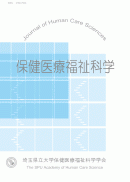Volume 4
Displaying 1-4 of 4 articles from this issue
- |<
- <
- 1
- >
- >|
Brief Notes
-
2015Volume 4 Pages 1-5
Published: March 31, 2015
Released on J-STAGE: December 03, 2019
Download PDF (1110K) -
2015Volume 4 Pages 6-11
Published: March 31, 2015
Released on J-STAGE: December 03, 2019
Download PDF (947K)
Brief Reports
-
2015Volume 4 Pages 12-18
Published: March 31, 2015
Released on J-STAGE: December 03, 2019
Download PDF (1435K) -
2015Volume 4 Pages 19-23
Published: March 31, 2015
Released on J-STAGE: December 03, 2019
Download PDF (857K)
- |<
- <
- 1
- >
- >|
